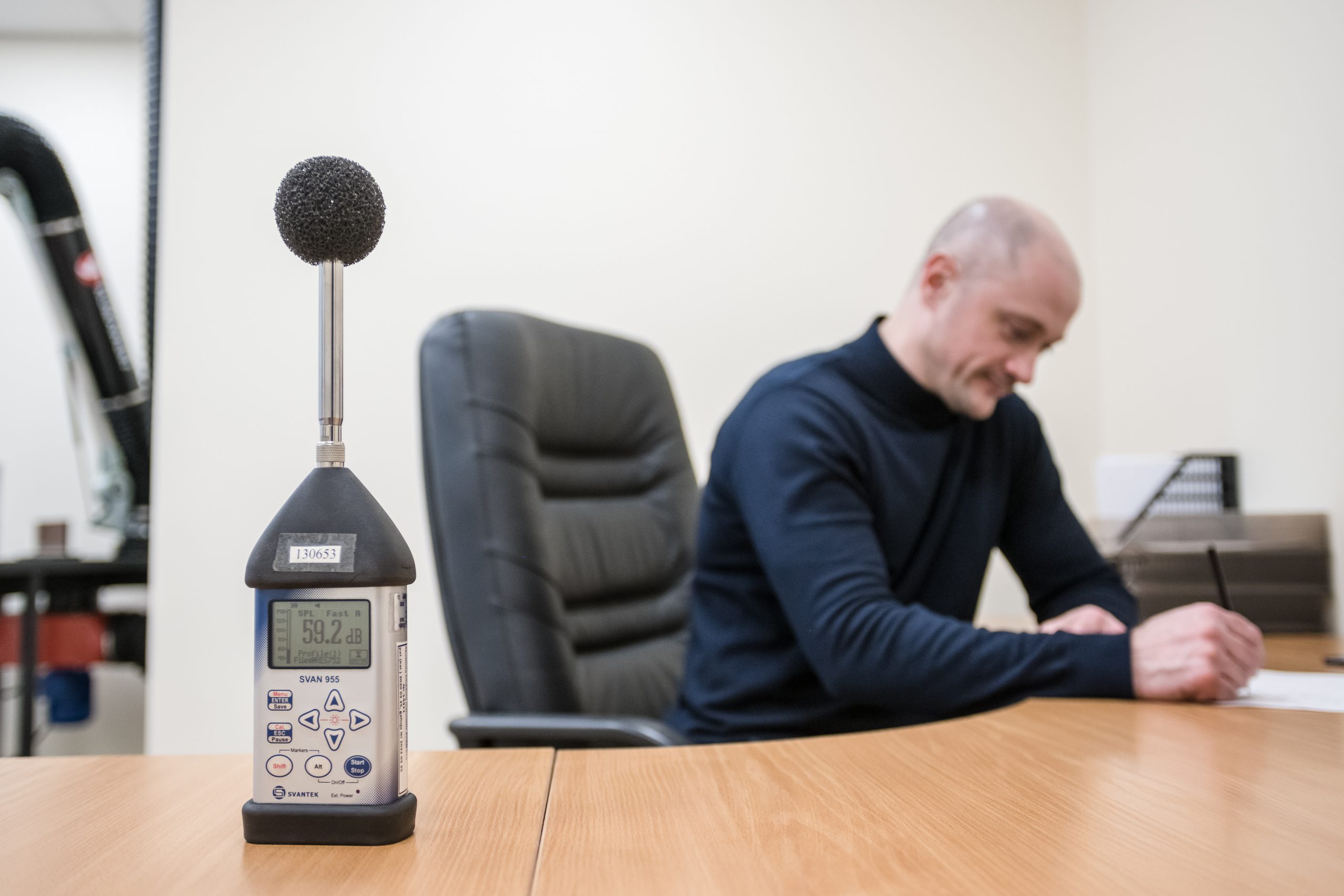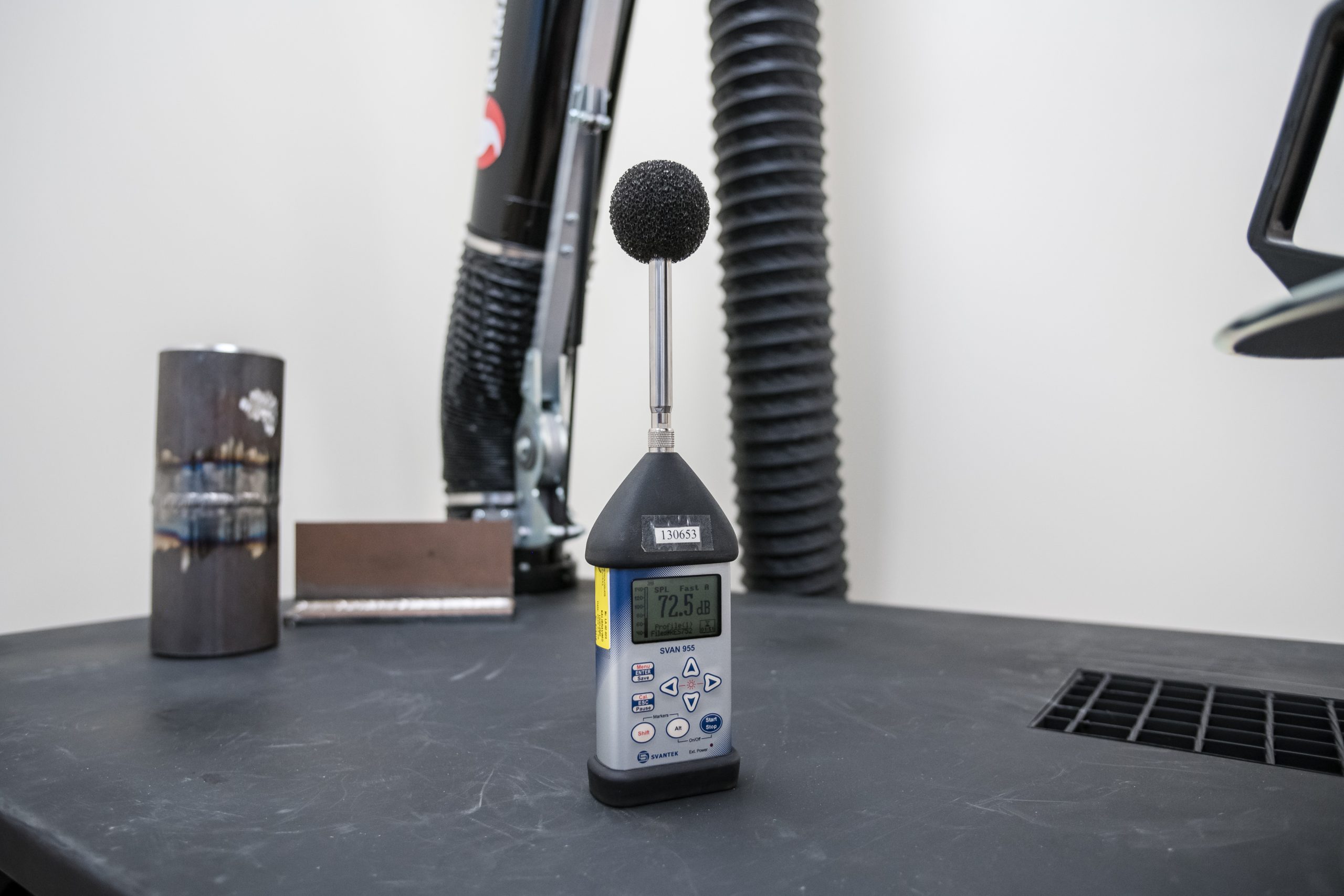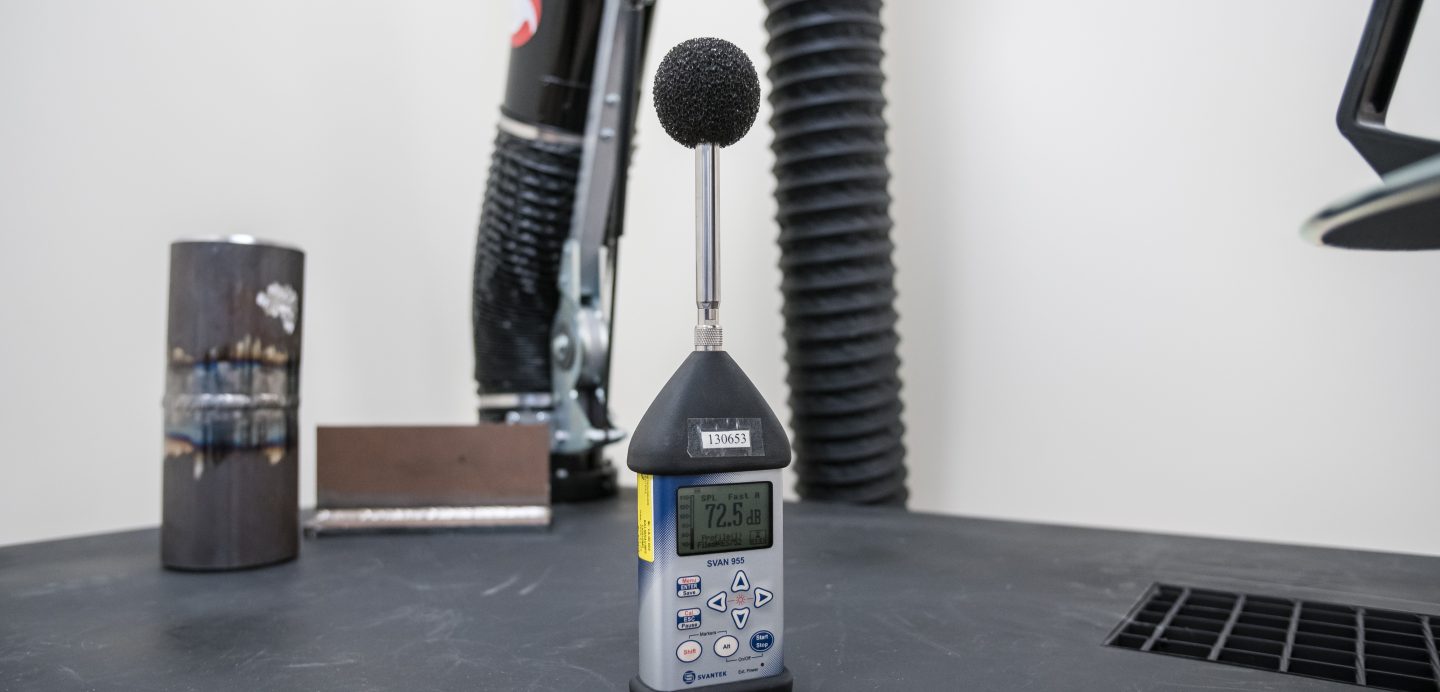A noisy environment has a negative effect on the human body. Noise in both the living environment and the workplace is detrimental to a person’s mental and somatic health, increases fatigue, reduces productivity and can irreversibly affect hearing and cause deafness, as well as negatively affecting the recognition of audible, information and warning signals. In order to avoid these consequences, it is particularly important that adequate measures are taken in the work and rest environment and that noise is managed in accordance with the established norms and requirements.
Specialists of WESTERN CENTRAL LABORATORY carry out measurements to assess various types of noise and to determine:
- Noise level at a workplace.
- Noise generated by industrial facilities.
Noise level measurements at a workplace
Each workplace should be properly equipped to meet the safe working environment requirements. Noise is an occupational risk factor that must be controlled, and specialists of WESTERN CENTRAL LABORATORY can help you to achieve this by conducting noise level measurements (acoustic measurements).
The latter are designed to assess the level of noise in the workplace and to identify the noisiest activities, operations, and locations that may affect the health of workers. The results obtained, help to determine whether the noise reduction measures applied in the workplace are sufficient and appropriate, and where no noise reduction measures have been put in place, to select the required ones.
The workplace noise measurements conducted by specialists of WESTERN CENTRAL LABORATORY are carried out in accordance with LST EN ISO 9612:2009. The following characteristics are analysed:
- ‘A’ – weighted equivalent continuous sound pressure level.
- ‘C’- weighted peak sound pressure level.
Measurements of noise generated by industrial facilities
The most cost-effective way of assessing the potential noise from industrial facilities is to measure it at the planning stage. To implement noise reduction measures at subsequent stages may be more difficult, and this process may require more investment and the result may be less effective. Therefore, every company that plans the construction of any new industrial facility, or the development of such facilities should take into consideration the need for noise level measurements. These measurements are also relevant for industrial facilities and managers of enterprises who plan to assess the impact on the environment, as the noise generated by operating industrial facilities must be managed as well.
Noise level measurements help to determine the noise level present at the site, and taking into consideration the results obtained, to apply appropriate procedures in the daily activities to reduce it.
The measurements of noise generated by industrial facilities are carried out by specialists of WESTERN CENTRAL LABORATORY, in accordance with the requirements set out in Chapter 6.5 of LST ISO 1996-2:2017. The following characteristics are analysed:
- Equivalent continuous sound pressure level.
- Maximum temporary weighted sound pressure level.
- Frequency weighted sound pressure level.



